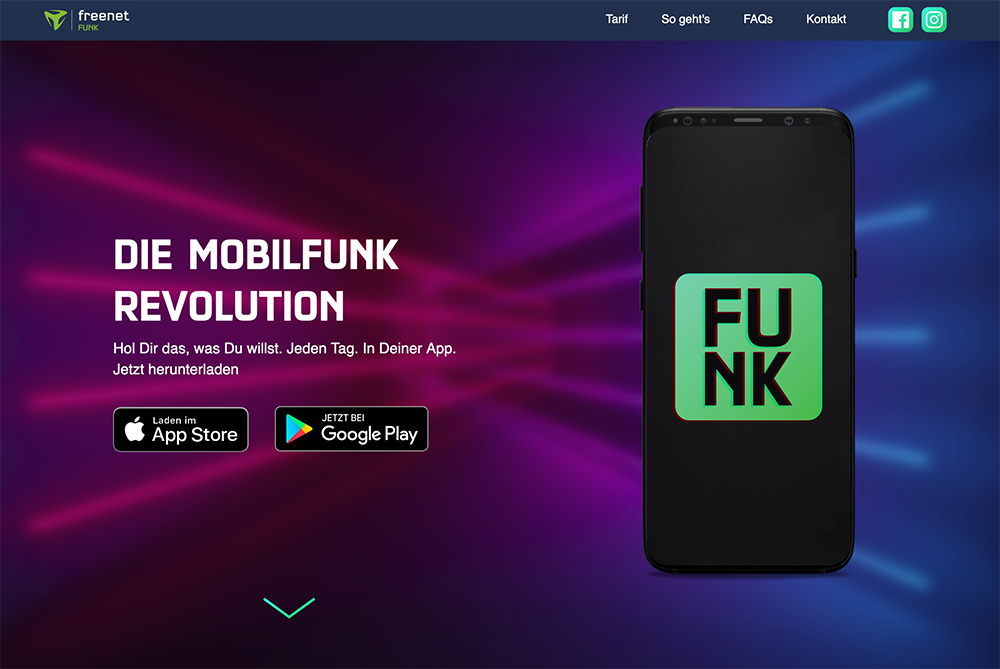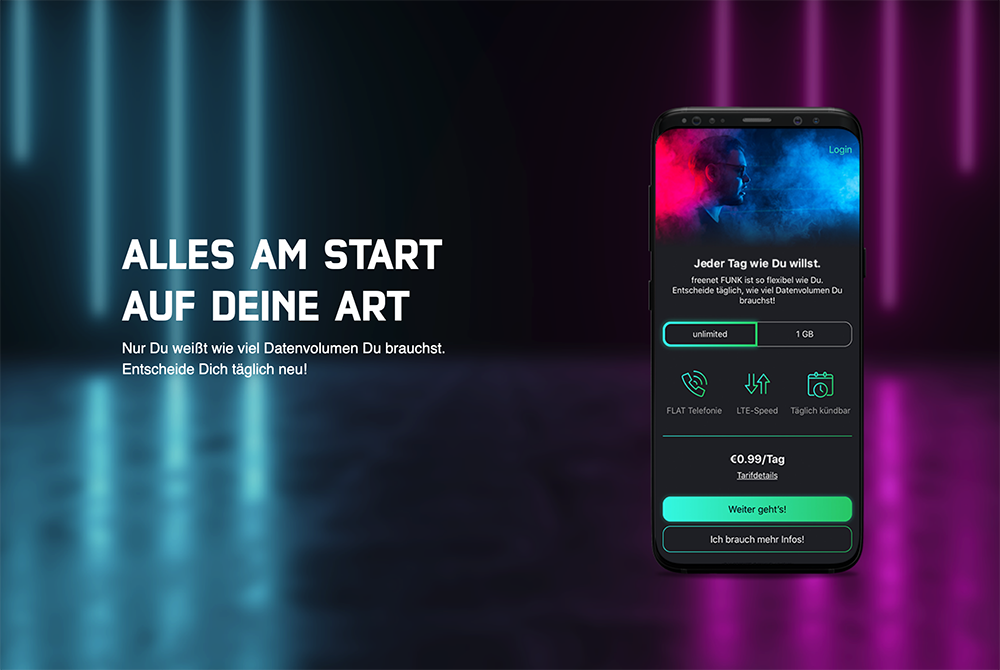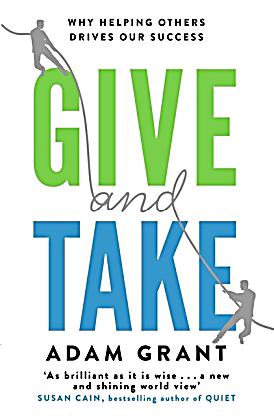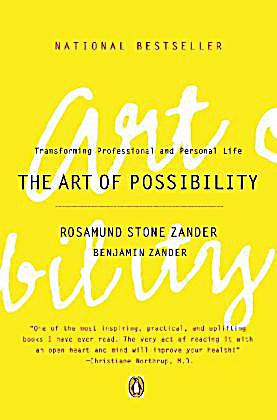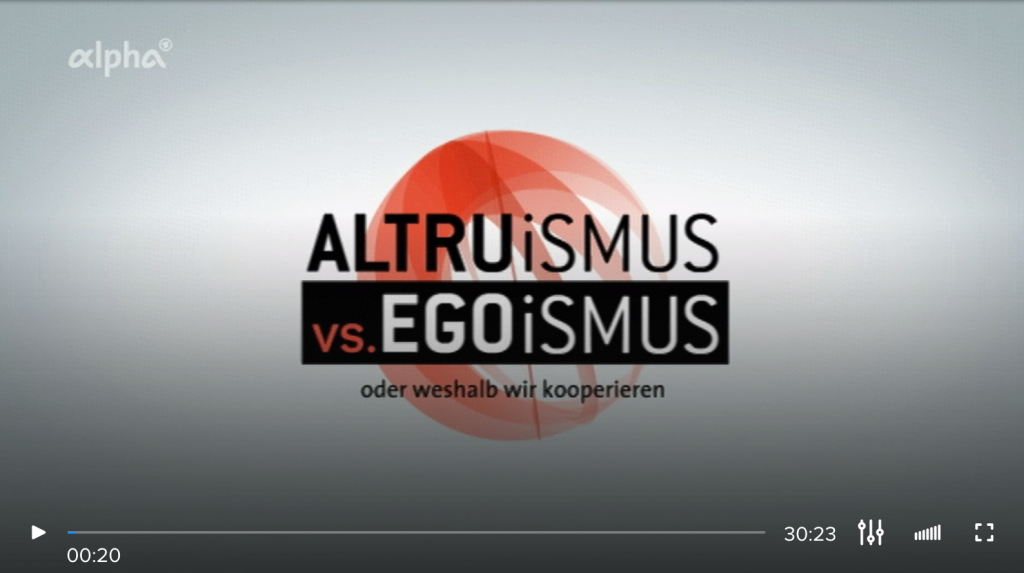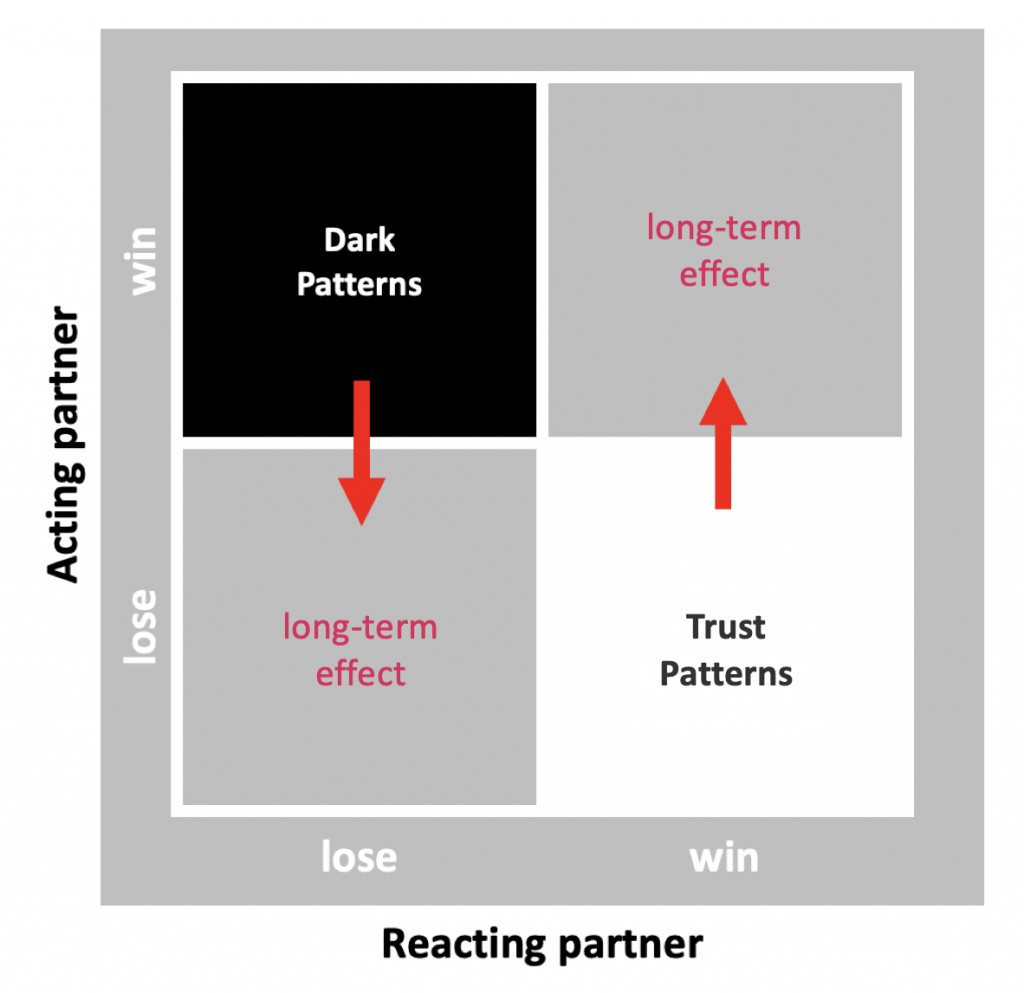Our dream about this blog is, that the ideas behind Trust Patterns will spread and many of you see the potential in trustworthy, long-term relationships, no matter if with foreign countries, your customers, clients, colleagues, neighbors, spouse or kids. The format of patterns seems to be ideal to help you easily experiment with and adopt the ideas and mechanics behind the Trust Patterns we identified in our research. I could write a whole different book about the power and beauty of patterns as a format to capture experience. Patterns are containers filled with ready to use best practice, they can set new norms, they are vivid sources of inspiration for innovation and they can help to predict future behavior in unknown set ups.
When we design something, no matter if physical, digital, processes or organizations, laws or regulations, brands or relationships, we have to consider many interdependent factors and make lots of decisions in an interrelated landscape of problems and solutions. Patterns help to make these decisions based on best practice sample. If the pattern has worked well for many previous design projects, there is reason to believe, that even if we don’t completely understand the problem or the mechanics behind a pattern thoroughly, we will derive a good solution. Patterns are mechanics you could plug and play in your solution.
Patterns make best practices accessible
I am half Bavarian and as such I have a copy of the famous „Bavarian Cook Book“. The structure of this 1.6 million copy bestseller was written by a Bavarian teacher, Maria Hofmann, back in the 1930s and is still seen as the cooking bible in Germany. It is based on the idea of patterns, in this case cooking patterns. There are about 100 basic recipes (cooking patterns) which are described in depth (e.g. how to make yeast dough) and about 1700 recipes based on those patterns (in this case dumplings, bread, Pizza, cakes, etc.). Patterns are best practice building blocks ready for reuse. They offer a condensed description of a proven mechanism or interdependency between multiple factors, which can be adopted for individual context related use.
Take another example, the „radio button“ pattern in the Interaction Design pattern library. It is a best practice mechanic connecting expertise in Screen design, Interaction Architecture, Usability, Legal and Coding practice. It can be applied in any kind of interface in which a user should select one of more than two options, such as in voting in elections, choosing a color for an item to purchase, selecting the right frequency for a SOS call at sea or selecting the media source on your in car TV. Using the pattern guarantees efficient coding, including all states and rules, that people understand it’s meaning and usage and that the way to offer options is legally save and according to quality standards such as the German TÜV. All in one building block – ready to be reused again and again.
For the same reason In Computer Science, patterns became very popular as they can be reused, making coding much more efficient. „Design patterns“ gained popularity in Computer Science. Design patterns can speed up the development process by providing tested, proven development paradigms which consider issues that may not become visible until later in the implementation. Patterns help to build on the experience of others. They are a powerful way to capture and share knowledge.
Patterns inspire
(Pattern based innovation)
Patterns can be used to re-invent systems in ways unusual in traditional design thinking processes. A paradigm in Design Thinking is, that we should always start with understanding the problem in it’s depth and then get creative in problem solving. Problems are usually documented in „How might we…?“ question, which set the focus for finding solutions. But in real life, there is another process to find innovative solutions, contrary to this approach. I bet it also happened to you once. You see a great solution for a problem, for instance how airplanes used Anti-blocking systems to allow a safer landing – and apply it to another context, let’s say cars. Often a great solution in one context is the inspiration to improve in another context. You didn’t start with the problem, but with a great solution for a problem. Eric von Hippel is one of the forerunners of this kind of innovation. Back in 2016 he established the idea of „Lead Users“ to innovate. His idea was to identify solutions from similar contexts and apply them to yours. Jed Laskowitz, CEO of the JP Morgan Case investment unit for instance was so impressed by the Netflix membership model, that he risked a multi-million earning stream and asked his organization to find ways to apply that model (the solution) to brokerage services of JP Morgan Case. It resulted in a „trading for free“ membership even though the bank had previously charged $24.95 for each online trade. Patterns help to trigger these „What if …?“ based innovations in a structured way.
There are many Pattern collections available made to inspire „New to the world“ innovations. All of them are generated by analyzing systems, clustering them in sub sets with similar cause and effect pairings and describing them in a rather abstract way, ready to be applied by and transferred to other contexts. A great example of those kinds of pattern collections are the Business Modell Innovation Patterns. In 2011, Prof. Oliver Gassmann and his team started the CTI project Business Model Innovation at the University of St. Gallen. The goal was to develop a methodology for business model innovation for incumbent firms. The analysis of more than 250 case studies culminated in the book “The Business Model Navigator,” written by Gassman, Frankenberger & Csik in 2014. It contains 55 Business Models which reappear throughout diverse industries and help to identify totally new ways to set up your business model. (https://bmilab.com/book)
For instance, the razor and blade model, in which one thing is sold for a very competitive price (razor) to make customers frequently buy the other thing (blades). We can see the same pattern for printers and cartridges, … – now apply this pattern to your business. What could be the razor, what could be the blades?
Or coming back to the Bavarian Cook Book: what if I apply the „how to smoke a fish“ pattern and apply it to vegetables?
Patterns predict
Patterns are predictions. They connect a cause with the most likely effect, which makes them extremely powerful means used for decision making. „Pattern recognition“ the active search for these cause and effect pairings is crucial in all aspects of our life. If there is a dog growling at you without leash, you predict a certain intention and act. If a customer bought twice at your shop, there is a high probability that he might become a long-term customer, if the client asks for a second meeting to discuss details of a project, there is a high probability, that he wants to work with you. Patterns are everywhere. In Psychology pattern recognition describes a cognitive process that matches information from a stimulus with information retrieved from memory. Quite the same happens in predictive analytics. Data is retrieved from diverse sensors and Data sources and then matched with expected intentions. Those expected intentions can then trigger behavior. An early example of this is learning to count. When parents repeat „1, 2, 3“ multiple times to a child, utilizing the pattern recognition, the child says „3“ after he/she hears „1, 2, „ in order. In predictive analytics the same would happen. The pairing of the Data retrieved (sequence of 1 and 2) with the expected intent (3) would lead to the output „4“ (just kidding ;). These patterns are extremely powerful, as they allow us to artificially predict intentions and trigger behavior in complex situations. For instance, pattern recognition can help to predict the “customer lifetime value” (CLV) of a customer. The CLV is a common metric used in Marketing to predict how valuable a specific customer will be in the overall future relationship, which could be years ahead. The CLV is based on a complex, interrelating set of data like how much money a customer spends, the number of returns they make, their ZIP code, transaction records, website interactions, customer-service conversations, social-media profiles, marital status or age. Via pattern recognition, the data of a single customer is connected with a most likely (future) intention and in case of a predicted CLV above average, it is the basis for customer tailored actions, such as special offers or faster reaction times. This is basically just a digital version of what store owners have been doing since the beginning of time — judging a person’s worth based on how the person looks like or how the person behaves.
Another example for prediction by patterns are the „High Value Activities“ Amazon and other eCommerce companies use to influence future behavior of their customers. Through pattern recognition, they find specific activities (other than purchasing an item or service) that in itself have no value to the company, but increase the probability of a future behavior with positive impact for the company. For instance a pattern such as „customers who at least once watch an Amazon Prime film within the for free trial period have a much higher chance of becoming paying Prime members“ can result in innovative Marketing activities to influence customer behavior (watch a film at least once).
Patterns can become norms
Have you ever seen a person holding a hand between the closing metal doors of an elevator? Have you ever experienced a kid touching the TV Screen to switch programs? Have you ever bought online in the assumption, that you can send back the item for free, if it doesn’t please you? Patterns, if they are applied often and accepted well, can define new expected conformities, norms, expectations and behavior.
With the Nobel Prize winners in Economic Sciences, Daniel Kahneman and Richard H. Thaler, we saw a rise in data-driven behavioral economics – unfortunately most often applied to so-called “dark patterns”, which make customers act to the benefit of companies. Or should I say “short-term benefit”, as those customers will try to leave or trick back in the long term.
For deep relationships, we need the opposite – “Trust Patterns” – in which all parties experience a “retainer” of benefits, trust and value which makes them loyal, long-term partners.
Trust Patterns can make this world – little by little – a better place
Trust Patterns will make best practice samples accessible and adoptable for all of us, Trust Patterns will inspire and motivate us to use trust based long-term relationships as a reciprocal advantage, Trust Patterns will help to integrate reciprocal altruism into data driven systems and last but not least, more and more Trust Patterns might become norms in society. We believe that using patterns as the form to document the best practices samples we found will motivate many of you, to apply more Trust Patterns in relationships and thus make this world little by little a better place.
